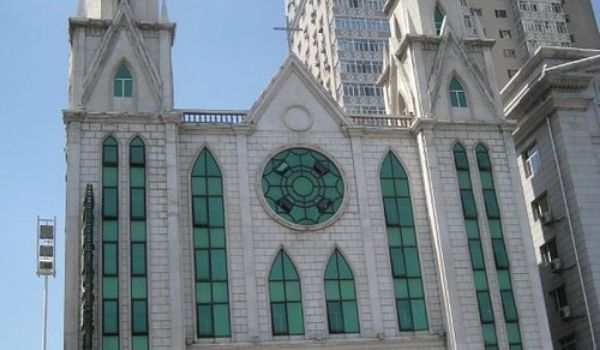
As per the Open Church structure, Harbin diocese covers the whole province of Heilongjiang in northeastern China, with a land area of approximately 469,000 sq. kilometres, including 19 cities and 39 counties.
Harbin city had 10,635,971 inhabitants according to the 2010 census, while there were 38,250,000 people in the Heilongjiang Province.
Mandarin Chinese and Northeastern Dialect are in use in the diocesan territory.
The Apostolic Administration of Harbin was erected on May 28, 1931. Archbishop Celso Costantini and Archbishop Mario Zanin, and the Apostolic Delegates to China, had been its apostolic administrators successively.
After the founding of the People's Republic of China in 1949, all foreign missioners were expelled from the mainland. The Apostolic Administration of Harbin became a part of the Harbin diocese when the government-sanctioned "open" Church structure created the new diocese by merging in the Heilongjiang province in the year 1959.
Father Peter Wang Ruihuan became the first "self-elected and self-ordained" bishop of Harbin without a papal mandate in the same year. The diocese was renamed as Heilongjiang diocese in 1983. Father Liu Huanbo was ordained the coadjutor bishop of Heilongjiang without a papal mandate in 1990 and succeeded Bishop Wang upon his death two years later. The diocese remained vacant after Bishop Liu died in 1997. It remained vacant until 2012 when Father Joseph Yue Fusheng received the episcopal ordination without a papal mandate. He was subsequently excommunicated latae sententiae by the Holy See.
Harbin is one of the largest railway hubs in northeast China, where five major railways (Jingha, Binsui, Binzhou, Binbei and Labin) meet. Trains are available to Beijing, Shanghai, Tianjin, Guangzhou, Jinan and several other major cities in China, with around 138 trains passing through Harbin on a daily basis.
Northeast China’s second-largest international airport is the Harbin Taiping International Airport. It has flights to more than 30 cities including Shanghai, Tianjin, Guangzhou, Hong Kong, and Beijing.
Heilongjiang has a convenient system of water transportation, with more than 1,900 rivers flowing through the province. Some of the rivers include the Wusulijiang River, the Songhua River, and the Heilongjiang River. The city of Harbin has the largest inland port in Northeast China. Passenger ships sail upstream from Harbin to Qiqihar, or downstream to Jiamusi, Tongjiang, and Khabarovsk in Russia, from mid-April up until November.
Harbin features a monsoon-influenced, humid continental climate with hot, humid summers and very cold winters. Its "Ice City" nickname is well-earned, as its winters are dry and bitterly cold, with a 24-hour average in January of only ?18.4 ?C. Yet the city sees little precipitation during the winter and is often sunny. Summers can be hot, with a July mean temperature of 23.0 ?C. Summer is also when most of the year's rainfall occurs. Spring and autumn constitute brief transition periods with variable wind directions. Extreme temperatures have ranged from ?41.4 ?C to 39.2 ?C.
Harbin is the center of Heilongjiang province economy development and also is an integrated city with industry as the principal part of economy and all three industries (eg. agricultural, industrial and servicing industries) general booming. The city is striving hard towards becoming the key trade and shopping center of the region. It is located in one of the fastest growing regions in the world and can boast a number of advantages such as an abundance of natural resources, good transport system and plenty of human resources.
In 2008, Harbin's GDP reached 286.82 billion yuan (US$44.9 billion), an increase of 13.2 percent over the previous year. Tertiary industry output remained the largest component of GDP reaching 140.04 billion yuan, an increase of 13.9 percent from the previous year. The GDP per capita was 29,012 yuan.
Harbin, the provincial capital, is located in southern Heilongjiang province, on the southeastern edge of the Songnen Plain. The city centre also sits on the southern bank of the middle Songhua River.
The Harbin local culture is based on Han culture, combined with Manchu culture and Russian culture. This combination of cultures influences the local architecture style, food, music, and customs. The city of Harbin was appointed a UNESCO City of Music on June 22, 2010 as part of the Creative Cities Network.